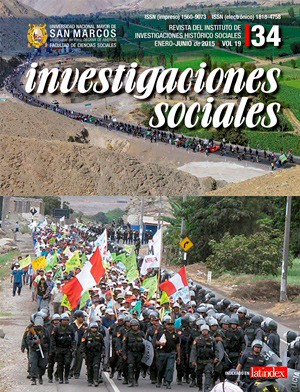The centralist decentralization of Peru: between crisis and development 1970-2014
DOI:
https://doi.org/10.15381/is.v19i34.11758Keywords:
Centralism, inequality, poverty, environment, development.Abstract
Peruvian centralism extends social and economic inequalities and the urban and regional disparities as well as increase the income disproportions compared to other countries. It is also important to note that the development model and type of centralist state in the twentieth century have seriously impacted the disintegration, inequality and migration from the provinces. Also the rural social movements, migration of young people, accelerated aging of its population contributed to the dislocation and impoverishment of the provinces. The lack of a modern political class and with regional, national and decentralist inspiration has made that the Peruvian development consolidates mostly in the axis of the coast of the country and particularly in Lima. The dimensions of centralism are economic, demographic, territorial, ethnic-linguistic and social political. Is not possible to understand the development process without considering the natural and historical territorial space that are concerned and how caring and exploit these spaces that watersheds. One of the fundamental aspects of national development is the existence of a modern, democratic, decentralized state with a political class with legitimacy.Downloads
Published
Issue
Section
License
Copyright (c) 2015 Franklin Ramiro Miranda Valdivia

This work is licensed under a Creative Commons Attribution-NonCommercial-ShareAlike 4.0 International License.
AUTHORS RETAIN THEIR RIGHTS:
a. Authors retain their trade mark rights and patent, and also on any process or procedure described in the article.
b. Authors retain their right to share, copy, distribute, perform and publicly communicate their article (eg, to place their article in an institutional repository or publish it in a book), with an acknowledgment of its initial publication in Investigaciones Sociales.
c. Authors retain theirs right to make a subsequent publication of their work, to use the article or any part thereof (eg a compilation of his papers, lecture notes, thesis, or a book), always indicating the source of publication (the originator of the work, journal, volume, number and date).






